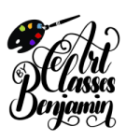For many years the world has believed in a right-brained people and left-brained people. Simply said, right-brained people are more creative, while left-brained people are more scientific and the two are hard to mix. In artist circles this believe is very popular, since it’s also widely believed by them that most people are left-brained, making right-brained artist more special. If you’re left-brained it will be hard to be creative, if you’re right-brained then you’re in luck, it’s easy to be creative. Whichever side of your brain is dominant, that determines your fate….. does it?
Luckily, with a lot of hard work and specialized training, you can become a bit creative if your left brainside is the dominant one and you can learn to draw and activate that right side of the brain. A book that supposedly can help you, according to many artists, is Betty Edwards, ‘Drawing on the right side of the brain’. Now hold on, don’t run out to get this book, but continue reading! This book ‘scientifically’ shows how to become more right-brained. Now everyone who has read this book and is honest about it, will quickly note that there’s nothing scientific about this book at all, but it’s in fact rather hocus-pocus.
But hang on Benjamin, how can it be hocus-pocus if it’s scientifically proven that humans have a left side and right side in their brains??? Ah…. but that’s where we go wrong, that was actually never scientifically proven at all. It was just assumed, but never proven. For decades many people, including scientists, doctors, psychologists and so on just assumed that this was true. Nothing could be further away from the truth though.
One popular example is Betty Edwards’ Drawing on the Right Side of the Brain, first published in 1979 but now in its fourth edition, which epitomizes the popular view that the right hemisphere is responsible for creativity. Brain imaging shows, though, that creative thought activates a widespread network, favoring neither hemisphere. A more recent example is Iain McGilchrist’s 2009 book The Master and His Emissary, which draws on cerebral asymmetry in a sweeping account of the forces that shaped Western culture, and provocatively declares the right hemisphere to be the dominant one (“the master”) [9]. Although widely acclaimed, this book goes far beyond the neurological facts. Polarities of left and right brain are broadly invoked in art, business, education, literary theory, and culture, but owe more to the power of myth than to the scientific evidence.
Despite the need for further study of the relationship between behavior and lateralized connectivity, we demonstrate that left- and right-lateralized networks are homogeneously stronger among a constellation of hubs in the left and right hemispheres, but that such connections do not result in a subject-specific global brain lateralization difference that favors one network over the other (i.e. left-brained or right-brained). Rather, lateralized brain networks appear to show local correlation across subjects with only weak changes from childhood into early adulthood and very small if any differences with gender.
